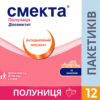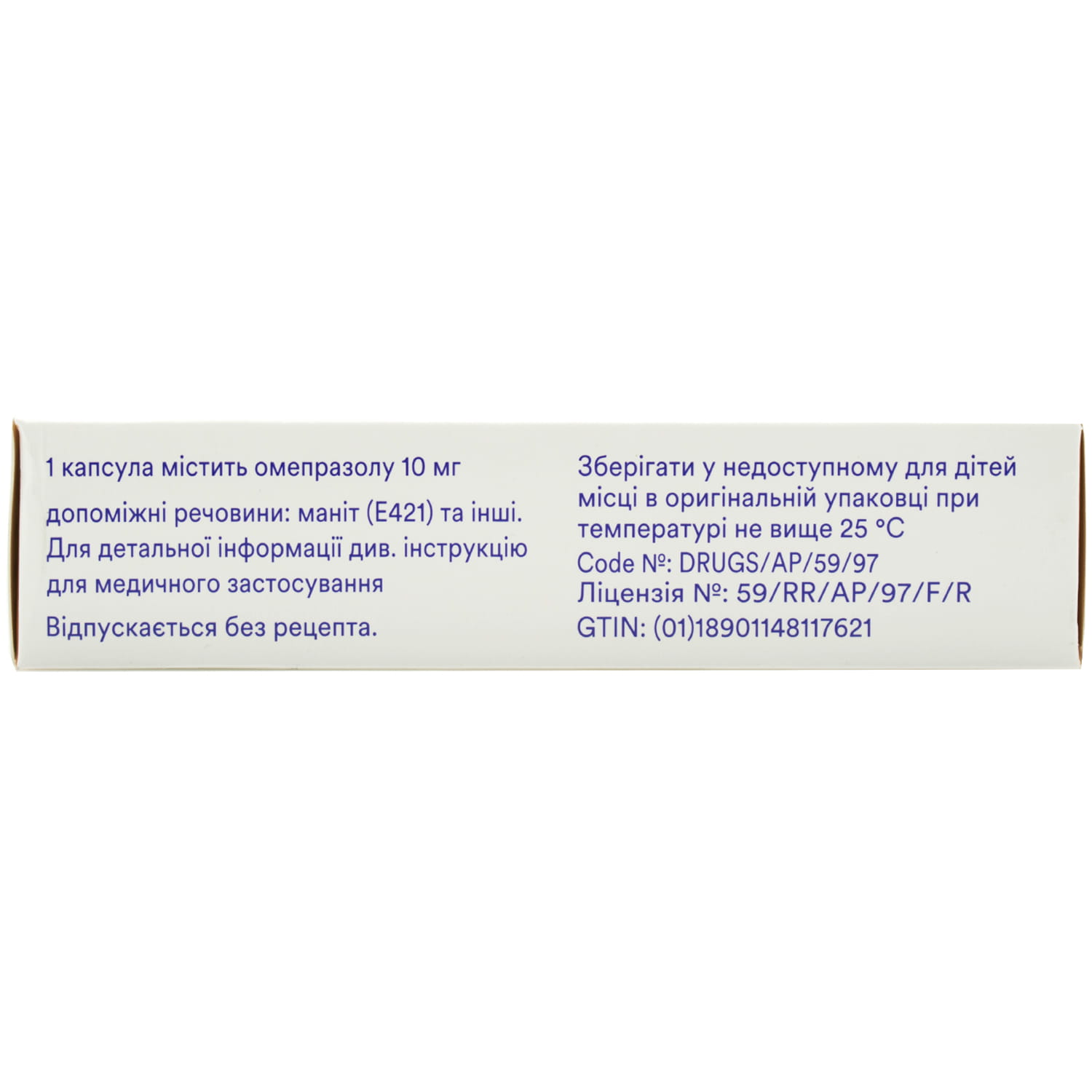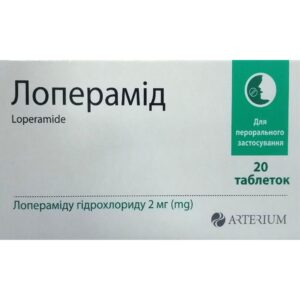Composition and form of release
Composition
active substance: omeprazole;
1 capsule contains omeprazole 10 mg;
excipients: mannitol (E 421), crospovidone, poloxamer, hydroxypropylmethylcellulose, meglumine, povidone, methacrylate copolymer (type C), triethyl citrate, magnesium stearate.
Release form
Capsules.
Pharmacological properties
Pharmacodynamics. mechanism of action. Omeprazole, a racemic mixture of two enantiomers, reduces gastric acid secretion through a targeted mechanism of action. omeprazole is a specific proton pump inhibitor (PPI) in the parietal cells of the stomach. it acts quickly and helps to control the suppression of gastric acid secretion when dosed once a day.
Omeprazole is a weak base that concentrates and turns into an active form in the acidic environment of intracellular tubules in parietal cells, where it inhibits the enzyme H + / K + -ATPase – an acid pump. Such an effect on the final stage of the process of acid formation of gastric juice is dose-dependent and provides highly effective inhibition of both basal and stimulated acid secretion, regardless of the nature of the stimulation.
Pharmacodynamic effects. All noted pharmacodynamic effects can be explained by the effect of omeprazole on acid secretion.
Effect on gastric acid secretion. Oral dosing of 20 mg of omeprazole once a day causes rapid and effective suppression of day and night acid secretion of gastric juice, the maximum effect is achieved within 4 days of treatment. In patients with duodenal ulcer, an average decrease in gastric acidity of about 80% occurs within 24 hours after taking 20 mg of omeprazole, and the average decrease in peak acid output after stimulation with pentagastrin is about 70% 24 hours after taking omeprazole.
Oral dosing of omeprazole 20 mg maintains intragastric pH ≥3 in patients with duodenal ulcer for an average of 17 hours out of a 24-hour period. As a result of reduced acid secretion and intragastric acidity, depending on the dose, omeprazole reduces / normalizes acid exposure of the esophagus in patients with gastroesophageal reflux disease. Inhibition of acid secretion is associated with the AUC area of omeprazole, and not with the actual concentration in the blood plasma now.
Tachyphylaxis was never observed during treatment with omeprazole.
Impact on Helicobacter pylori (H. pylori). Peptic ulcer disease is associated with H. pylori, including gastric and duodenal ulcers. H. pylori is considered as the main decisive factor in the development of gastritis. H. pylori, together with gastric acid, are the main factors in the development of peptic ulcer disease. The presence of H. pylori contributes to the development of atrophic gastritis, which is associated with an increased risk of stomach cancer.
A decrease in pH with the use of omeprazole and antimicrobial agents is associated with a rapid reduction in the severity of symptoms, with a high percentage of healing of any mucosal lesions, and with long-term remission of peptic ulcer disease.
Other effects related to acid suppression. During long-term treatment, a slightly increased frequency of the appearance of granular cysts in the stomach was reported. These changes are a physiological consequence of the existing suppression of acid secretion, the cysts are benign and appear to be reversible.
Reducing the acidity in the stomach with any means, including PPIs, increases the number of bacteria in the stomach that are normally present in the gastrointestinal tract. Treatment with antacids may lead to a slightly increased risk of gastrointestinal infections, such as those caused by Salmonella and Campylobacter.
Application in pediatrics. In an uncontrolled study involving children (aged 1 to 16 years) with severe erosive esophagitis, omeprazole in doses of 0.7-1.4 mg/kg improved the condition of esophagitis in 90% of cases and significantly reduced reflux symptoms. In a blind study without a comparison drug, children aged 0 to 24 months with an established diagnosis of GERD were treated with omeprazole in doses of 0.5; 1.0 and 1.5 mg/kg. The incidence of vomiting/belching episodes was reduced by 50% after 8 weeks of treatment regardless of dose.
Eradication of H. pylori bacteria in children. A randomized, double-blind clinical trial (the Héliot trial) concluded that omeprazole in combination with two antibiotics (amoxicillin and clarithromycin) was safe and effective in the treatment of H. pylori infection in children aged 4 years and older with gastritis: rate destruction of H. pylori: 74.2% (23/31 patients) – in the group receiving the combination of omeprazole + amoxicillin + clarithromycin compared to 9.4% (3/32 patients) – in the group using the combination of amoxicillin + clarithromycin. This study does not include information on children under 4 years of age.
Pharmacokinetics. Absorption. Absorption of omeprazole is rapid with C max in blood plasma 1-2 hours after taking a dose. Absorption of omeprazole occurs in the small intestine and is usually completed in 3-6 hours. Food intake has no effect on bioavailability. The systemic availability (bioavailability) of these drugs under a single oral dose is approximately 40%. After repeated administration once a day, bioavailability increases to approximately 60%.
Distribution. The volume of distribution in healthy people is approximately 0.3 L/kg. Binding of omeprazole to blood plasma proteins is 97%.
Metabolism. Omeprazole is completely metabolized by the cytochrome P450 system. A significant part of the metabolism of omeprazole depends on the polymorphically expressed specific isoform CYP 2C19, which is responsible for the formation of hydroxyomeprazole, the main plasma metabolite. The remaining part depends on another specific isoform, CYP 3A4, responsible for the formation of the omeprazole sulfone. Due to the high affinity of omeprazole and CYP 2C19, there is potential for competitive suppression and metabolic interactions between drugs with other CYP 2C19 substrates. However, due to its low affinity for CYP 3A4, omeprazole has no potential to inhibit the metabolism of other CYP 3A4 substrates. In addition, omeprazole has no inhibitory effect on the main CYP enzymes.
Approximately 3% of the Caucasian population and 15-20% of the Mongoloid race do not have a functional CYP 2C19 enzyme. In such individuals, the metabolism of omeprazole is likely to be catalyzed primarily by CYP 3A4. After repeated administration of omeprazole 20 mg once a day, the average AUC was 5-10 times higher in slow metabolizers than in individuals with a functional CYP 2C19 enzyme (rapid metabolizers). C max in blood plasma was also 3-5 times higher. These observations have nothing to do with the dosage of omeprazole.
Breeding. The final T ½ of omeprazole from the blood plasma is usually less than 1 h after both single and multiple oral doses once a day. Omeprazole is completely removed from blood plasma between doses without a tendency to accumulate when administered once a day. Approximately 80% of an oral dose of omeprazole is excreted in the form of metabolites with urine, and the rest – with feces, bile secretion.
With repeated dosing, the AUC of omeprazole increases. This increase is dose-dependent and results in a non-linear relationship between dose and AUC after repeated dosing. Such a dependence on time and dose is associated with a decrease in presystemic metabolism and systemic clearance, possibly caused by suppression of the CYP 2C19 enzyme by omeprazole and/or its metabolites (for example, a sulfone).
It has not been established that the metabolite has any effect on the secretion of gastric juice.
Special populations. Violation of liver function. In patients with impaired liver function, the metabolism of omeprazole changes, leading to an increase in AUC. Omeprazole did not demonstrate any tendency to accumulation at once-daily dosing.
Impaired kidney function. Pharmacokinetics of omeprazole, including systemic bioavailability and elimination rate, are not altered in patients with reduced renal function.
Elderly patients. The rate of metabolism of omeprazole is slightly reduced in elderly patients (75-79 years).
Children. During treatment with recommended doses at the age of 1 year, blood plasma concentrations similar to those in adults were obtained. In children under the age of 6 months, the clearance of omeprazole is low due to the low ability of biotransformation of omeprazole.
Indication
Dyspeptic syndrome associated with increased acidity of gastric juice, manifested by heartburn, acid belching, pain in the epigastric area.
Contraindication
Hypersensitivity to omeprazole, substituted benzimidazoles or any excipient. Omeprazole, like other proton pump inhibitors (PPIs), should not be used concurrently with nelfinavir.
Method of application and dosage
Adults and children over 12 years old.
The usual recommended dose is 1 or 2 capsules of the drug Omez® 1 time a day, which is, respectively, 10 mg or 20 mg of omeprazole, for 2-4 weeks depending on the severity and persistence of symptoms. If relief does not occur after 4 weeks or symptoms reappear shortly, you should consult a doctor.
It is recommended to take capsules in the morning, preferably before meals, without damaging the capsule (capsules should not be chewed or broken) and with a small amount of water.
For patients with swallowing difficulties and for children who can drink or swallow semi-solid food. The capsules can be opened and swallowed directly with half a glass of water, or mixed in a mildly acidic liquid, such as any fruit juice or applesauce, or unsalted water. Such a mixture must be drunk immediately after preparation or within 30 minutes. Before taking, the mixture should be shaken and mixed with half a glass of water. Do not use milk or carbonated water.
Children. The drug should be used for the treatment of children over 12 years of age.
Use during pregnancy or breastfeeding
Research results indicate the absence of a negative impact on pregnancy, the health of the fetus or the newborn child. Omeprazole can be used during pregnancy if the expected benefit to the mother outweighs the possible risk to the fetus. Omeprazole penetrates into breast milk in a small amount, but its effect on the child is unknown, so breastfeeding should be stopped during the period of treatment with the drug.
To the drivers
It is unlikely that the drug affects the ability to drive vehicles or work with mechanisms. Undesirable reactions to the use of the drug, such as dizziness and visual disturbances, may occur (see the “Side effects” section). If such disorders are observed, patients should not drive vehicles or work with mechanisms.
Overdose
Data on the effects of omeprazole overdose in humans. Very limited in the scientific literature was the description of the use of doses up to 560 mg of omeprazole, there are also isolated reports of the use of a single oral dose of 2400 mg of omeprazole (120 times higher than the usual recommended clinical dose). Nausea, vomiting, dizziness, abdominal pain, diarrhea and headache have been reported. Apathy, depression and confusion have also been reported in isolated cases.
The described symptoms are fleeting. The elimination rate does not change (first-order kinetics) with increasing dose. Treatment is symptomatic if necessary.
Adverse reactions
The most common side effects are headache, abdominal pain, constipation, diarrhea, bloating, and nausea/vomiting. The following adverse reactions to the drug were detected during clinical trials of omeprazole or post-marketing use. Adverse reactions are classified according to their effect on organ systems.
- From the blood and lymphatic system: leukopenia, thrombocytopenia, agranulocytosis, pancytopenia.
- From the immune system: hypersensitivity reactions such as fever, angioedema and anaphylactic reaction/shock.
- From the side of metabolism and digestion: hyponatremia, hypomagnesemia, severe hypomagnesemia can lead to hypocalcemia. Hypomagnesemia can also be associated with hypokalemia.
- On the part of the psyche: insomnia, excitement, confusion, depression, aggression, hallucinations.
- From the nervous system: headache, dizziness, paresthesia, drowsiness, taste disturbance.
- On the part of the organs of vision: blurred vision.
- From the organs of hearing and balance: ringing in the ears, vertigo.
- From the side of the respiratory system, organs of the chest and mediastinum: bronchospasm.
- From the gastrointestinal tract: abdominal pain, constipation, diarrhea, bloating, nausea/vomiting, dry mouth, stomatitis, candidiasis of the gastrointestinal tract, microscopic colitis, polyps of the fundic glands (benign).
- From the side of the liver and biliary tract: increased level of liver enzymes, hepatitis with or without jaundice, liver failure, encephalopathy in patients with pre-existing liver disease.
- From the side of the skin and subcutaneous tissues: dermatitis, itching, rash, urticaria, alopecia, photosensitivity, polymorphic erythema, Stevens-Johnson syndrome, toxic epidermal necrolysis, subacute cutaneous lupus erythematosus (see section “Particulars of use”).
- On the part of the musculoskeletal system: arthralgia, myalgia, muscle weakness, the risk of fractures increases with long-term use (see the section “Peculiarities of use”).
- From the side of the kidneys and urinary tract: interstitial nephritis, renal failure.
- From the reproductive system and mammary glands: gynecomastia.
- General disorders: discomfort, malaise, peripheral edema, increased sweating.
Storage conditions
Store in the original packaging out of the reach of children at a temperature not higher than 25°C. Shelf life – 3 years.











Reviews
There are no reviews yet.